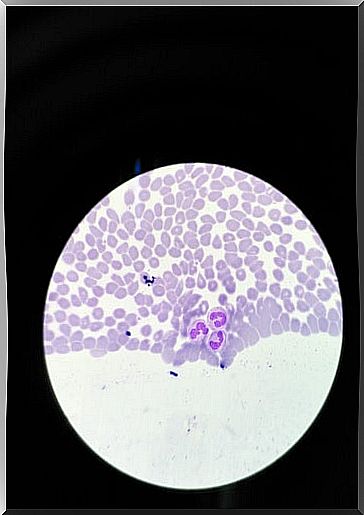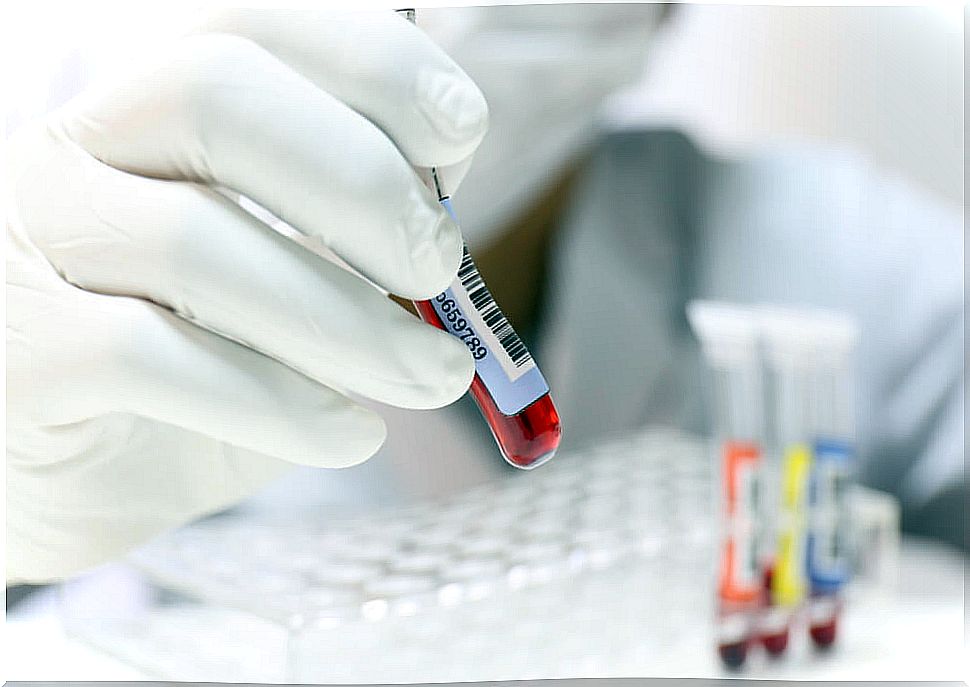Agranulocytosis: Symptoms And Treatments
Agranulocytosis can cause frequent infections, fever, chills, and other nonspecific symptoms.

Agranulocytosis is a disease of the blood. It consists of the decrease of granulocytes in the blood. Granulocytes are cells present in our blood, which are mainly responsible for fighting infections.
There are three types of granulocytes :
- Neutrophils.
- Eosinophils.
- Basophils.
Agranulocytosis is also called neutropenia or granulocytopenia. According to the most widespread definition, it occurs when the number of neutrophils is less than 1,000 – 1,500 cells per cubic millimeter of blood.
It is a rare but potentially serious condition. In this article we explain what it is and what its symptoms are.
Why does agranulocytosis occur?
As we have mentioned, agranulocytosis consists in that the number of neutrophils in the blood decreases. This can happen for two reasons:
- Ineffective granulopoiesis. It refers to a failure in the neutrophil creation process, which takes place in the medulla. Therefore, any spinal alteration can cause it. For example, it can occur in aplastic anemia or leukemia.
- Early destruction or use of neutrophils. If this happens faster than the marrow can generate new neutrophils, agranulocytosis occurs.
Neutrophils are cells responsible for fighting bacterial infections. Therefore, its overuse occurs in these situations. On the other hand, early destruction can occur due to certain medications, such as metamizole. Also by radiation or autoimmune processes.
In this way, we can say that the etiology of agranulocytosis can be:
- Genetics, when the production of cells is altered by a problem in the genes.
- Congenital
- Acquired. Here we include agranulocytosis caused by drugs or as a consequence of neoplasms.

How do we classify it?
The severity of agranulocytosis is classified according to the number of neutrophils in the blood. In this way, it can be:
- Mild : number of neutrophils is less than 1,000 – 1,500 cells / cubic millimeter of blood.
- Moderate: it is less than 500 – 1,000 cells / cubic millimeter of blood.
- Severe: number of neutrophils is less than 500 cells / cubic millimeter of blood.
Symptoms of agranulocytosis
This pathology has no specific symptoms. In fact, it can even go unnoticed. Some of the most common signs are:
- Fever greater than 38ºC. It is usually accompanied by chills and sweat.
- Cough and dyspnea.
- Weakness and fatigue
- Sores in the mouth and vascular ulcers.
- Discomfort when urinating
- Vomiting and diarrhea
In the case of women, there may be a change in vaginal secretions. The important thing is to know that the patient suffers from infections more frequently. In addition, they are usually rare infections.
How is it diagnosed?
Doctors suspect this pathology when, as we have said, infections are frequently suffered. First, a blood test is done. A low number of granulocytes will appear in it. Also, the bone marrow can be examined by biopsy or aspiration.
Other tests that serve to reach the diagnosis are:
- Analysis of urine or other fluids. In this way, infectious agents can be found if the person has a fever.
- Genetic testing
- Antibody tests. They are useful to rule out an autoimmune cause.

Treatment of agranulocytosis
Treatment depends on the cause and the severity of the case. In this way, if the cause is pharmacological, it is necessary to withdraw the drug that produces it. If you cannot, the ideal is to choose another drug. In addition, control blood tests should be done.
In case of infection, the patient must take antibiotics. The most widespread strategy is to take antibiotics against the most common microorganisms. When agranulocytosis is due to an autoimmune disorder, corticosteroids work well.
In addition, there are currently more specific treatments, such as:
- Leukocyte transfusion.
- Granulocyte colony stimulating factor (G-CSF). It is a method that stimulates the bone marrow to make more granulocytes. It is especially effective in people whose agranulocytosis is due to chemotherapy.
- Bone marrow transplant. It is reserved for cases where the other measures have not worked. Healthy bone marrow can produce healthy granulocytes. However, it is difficult to find compatible donors.
In conclusion
Agranulocytosis is a complex blood disease. You need to see a doctor if you suffer from frequent infections. Also if you feel weakness, fever or any other symptoms mentioned. The doctor will carry out the pertinent examinations and establish the necessary treatment.









